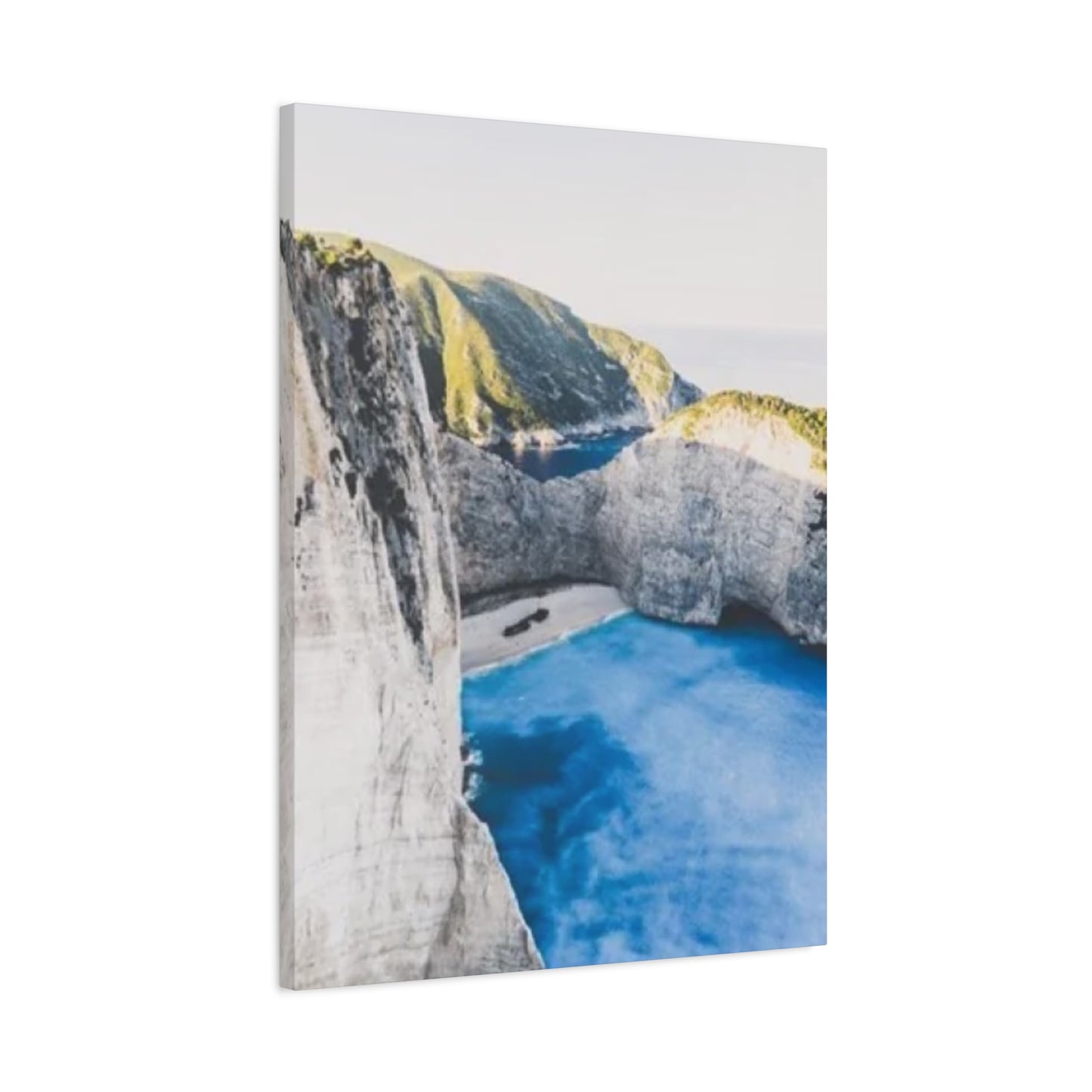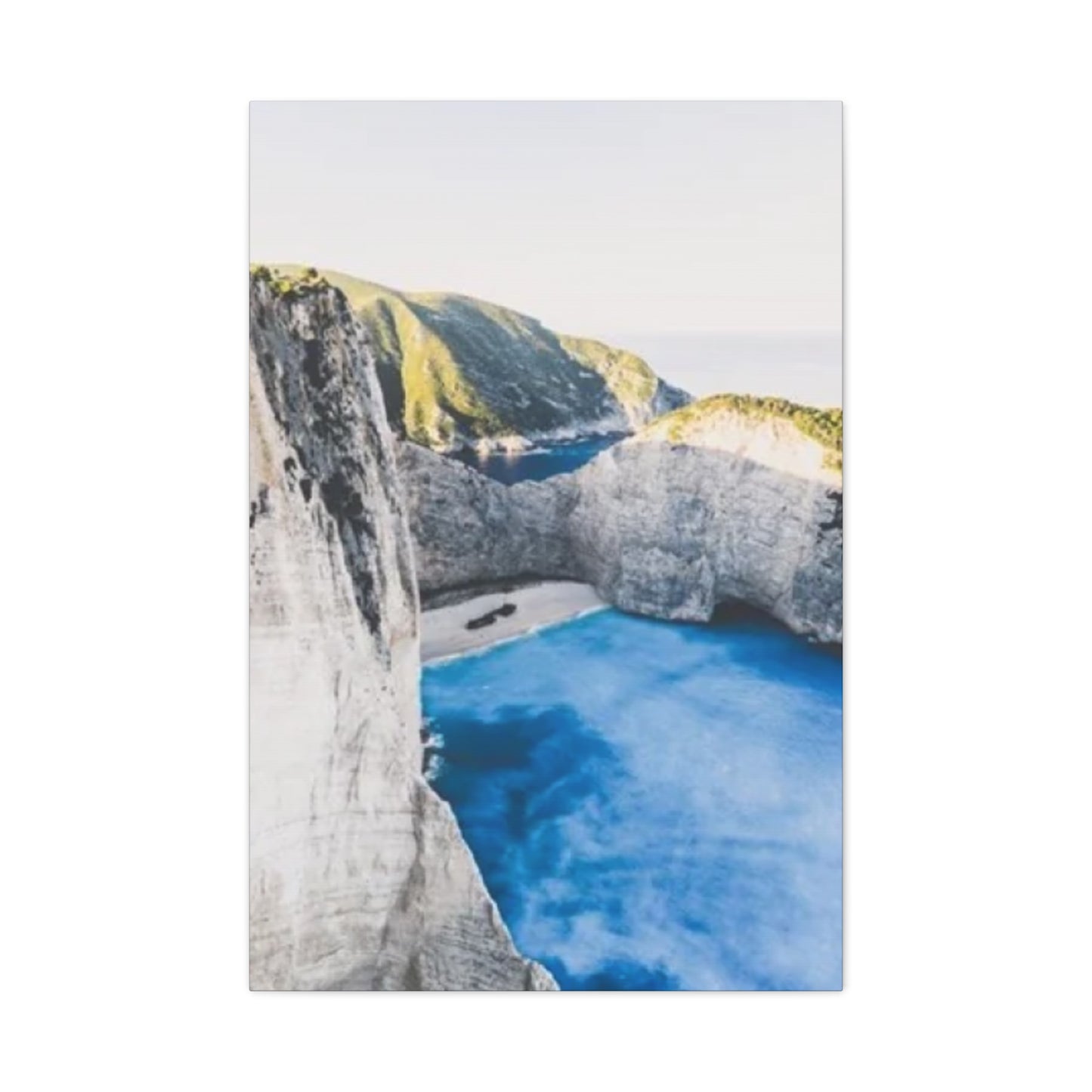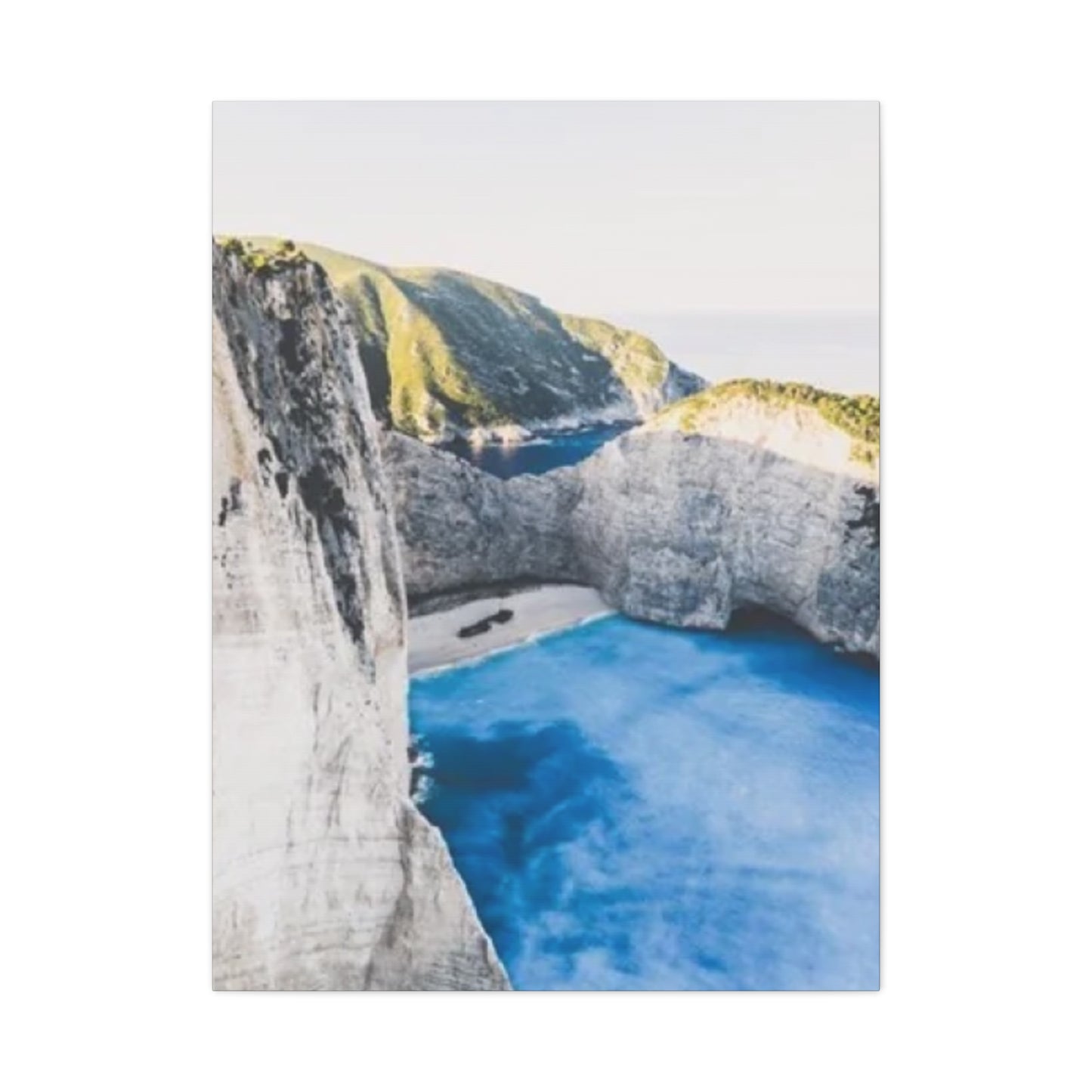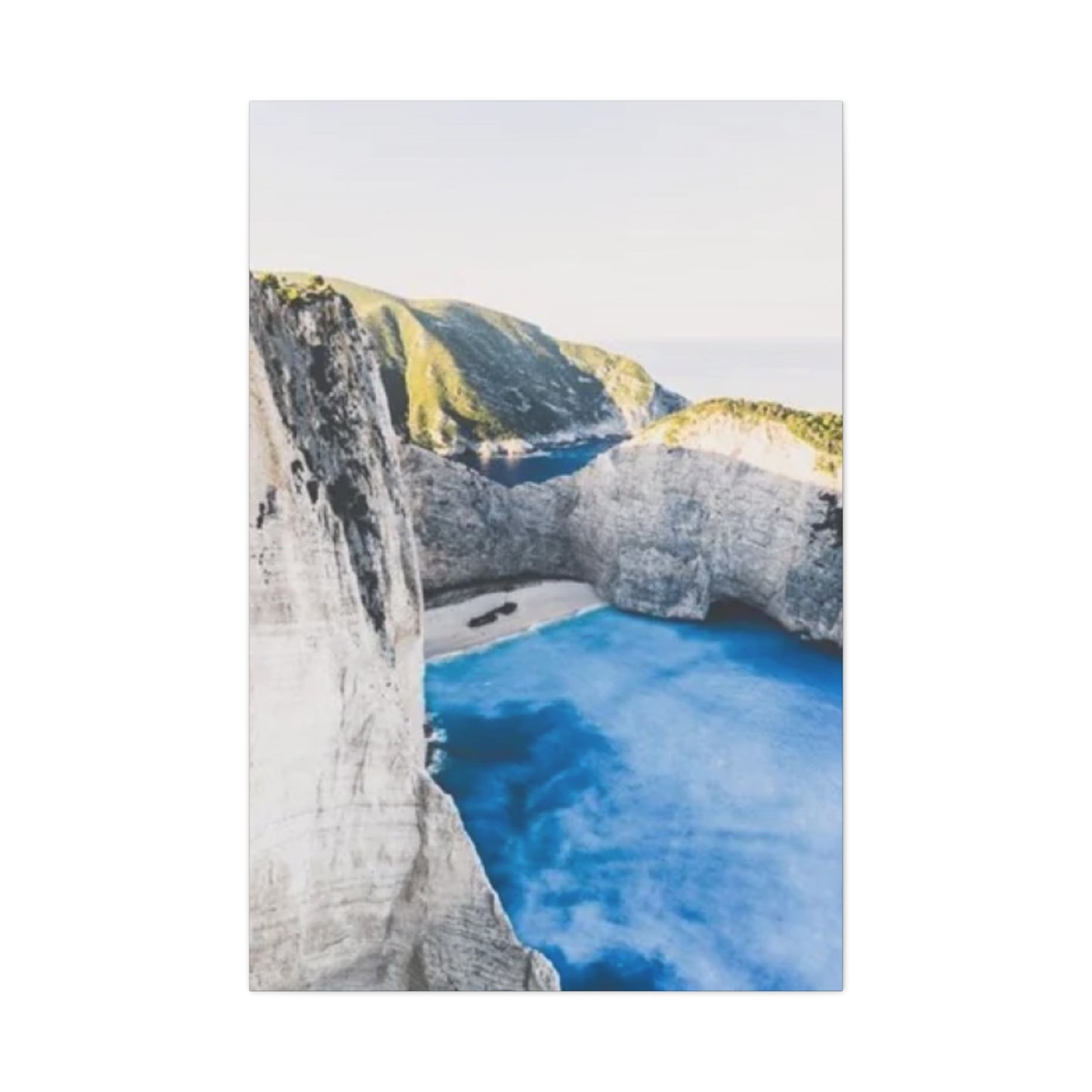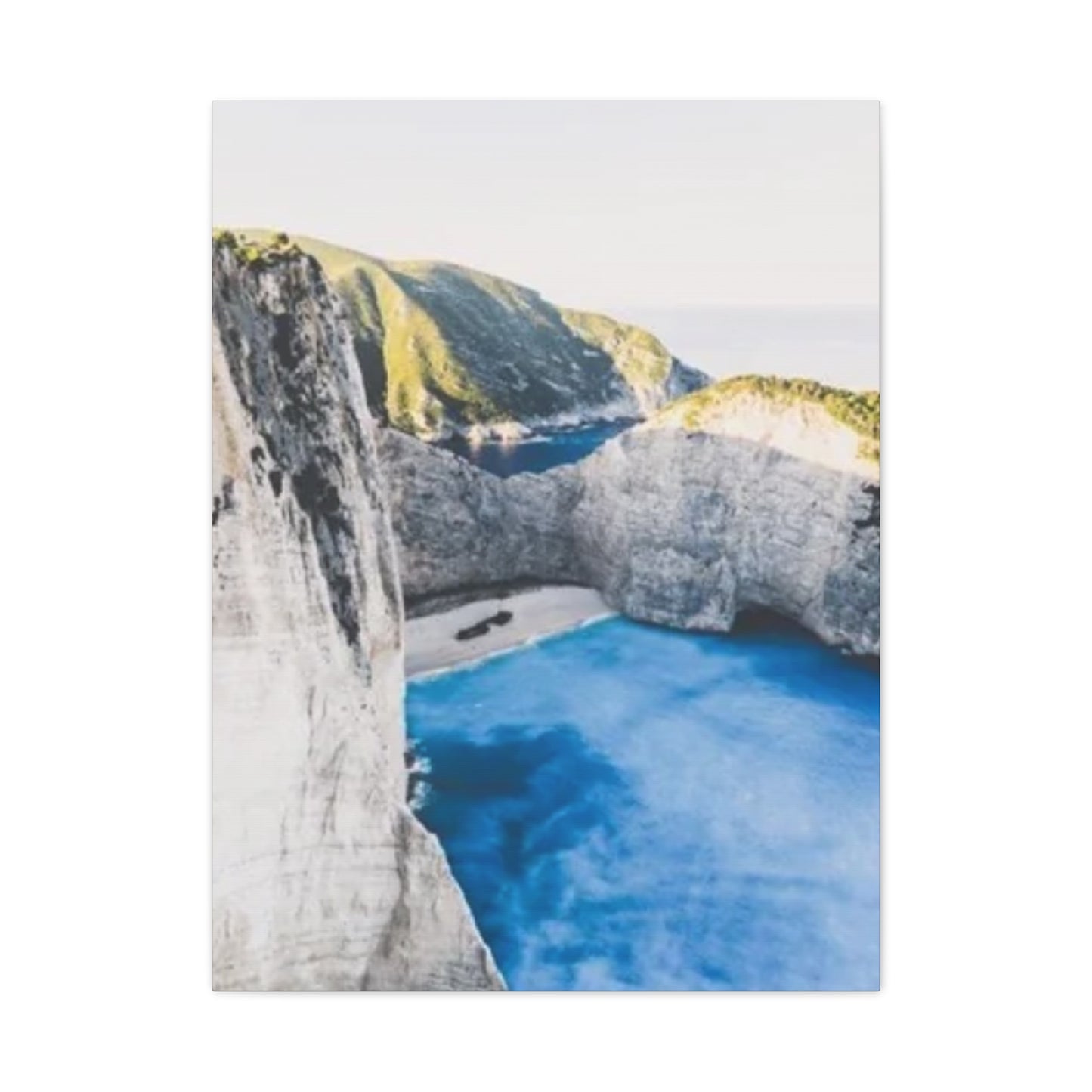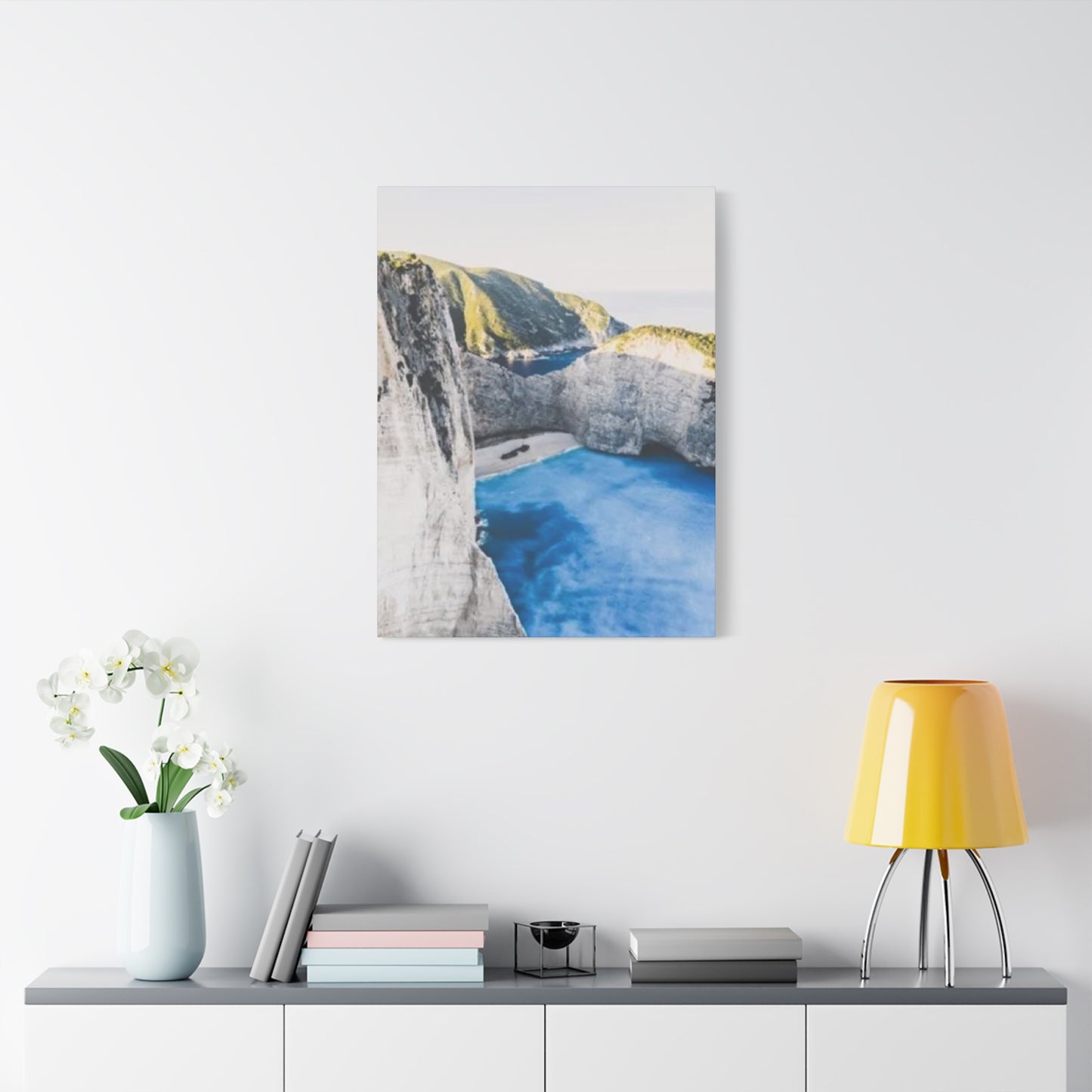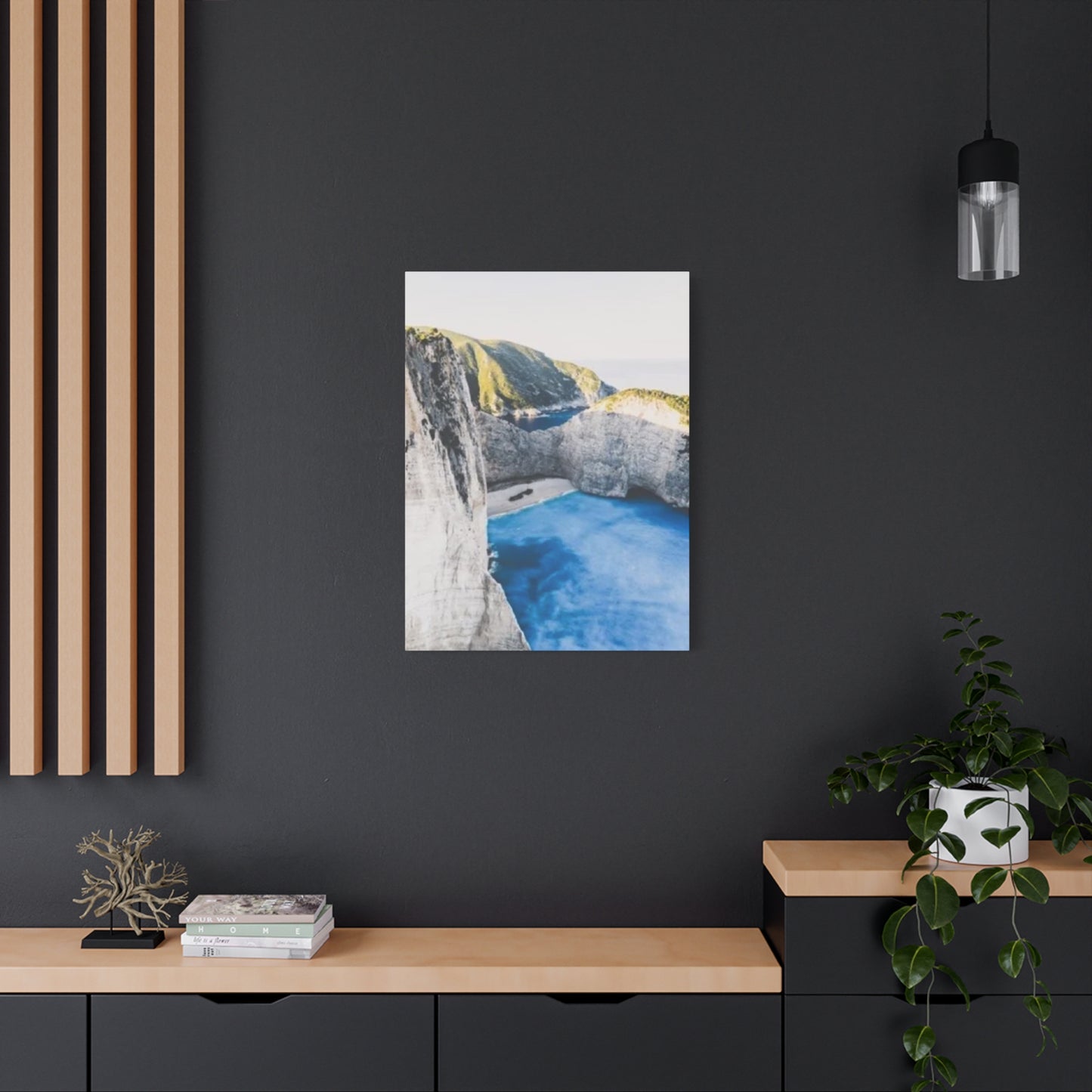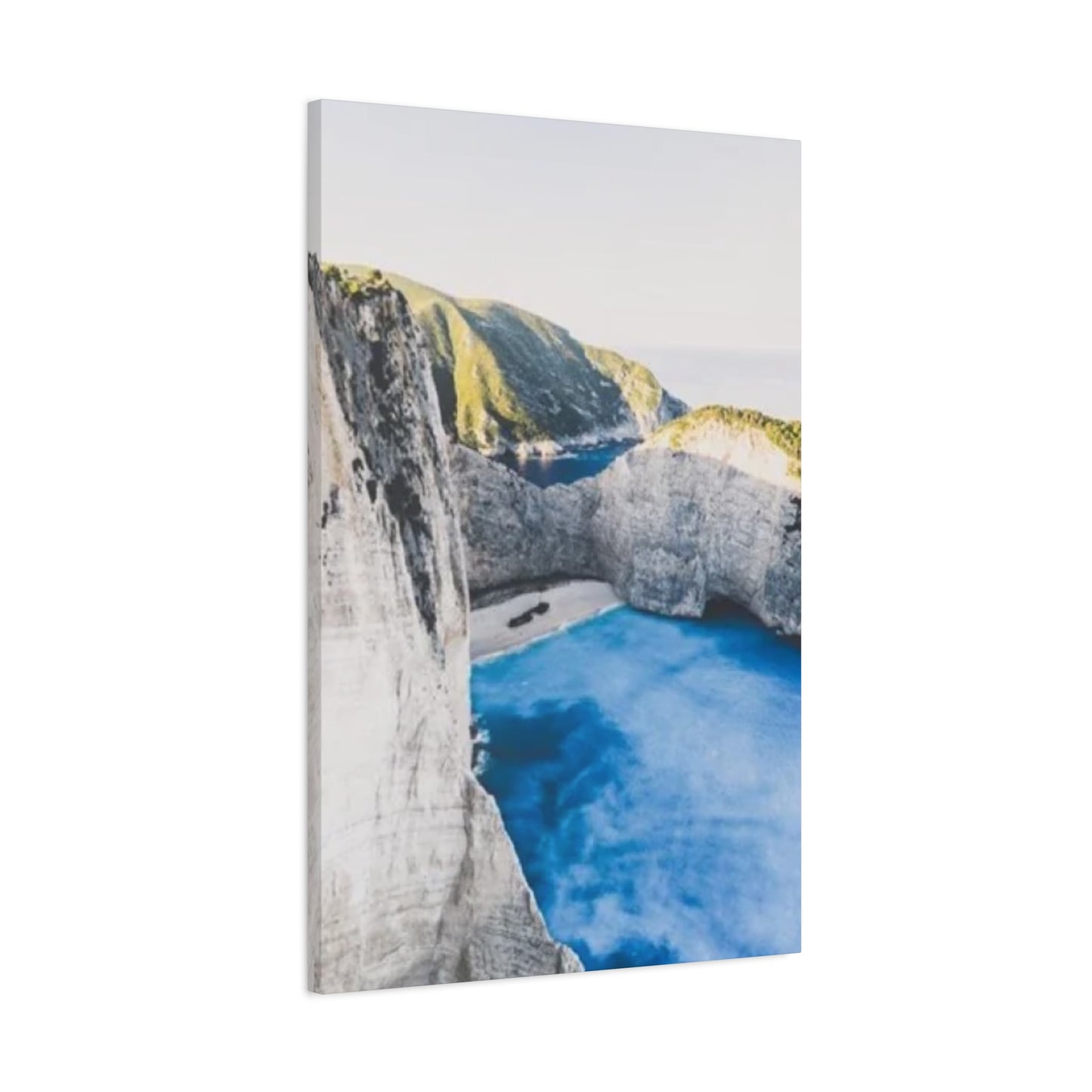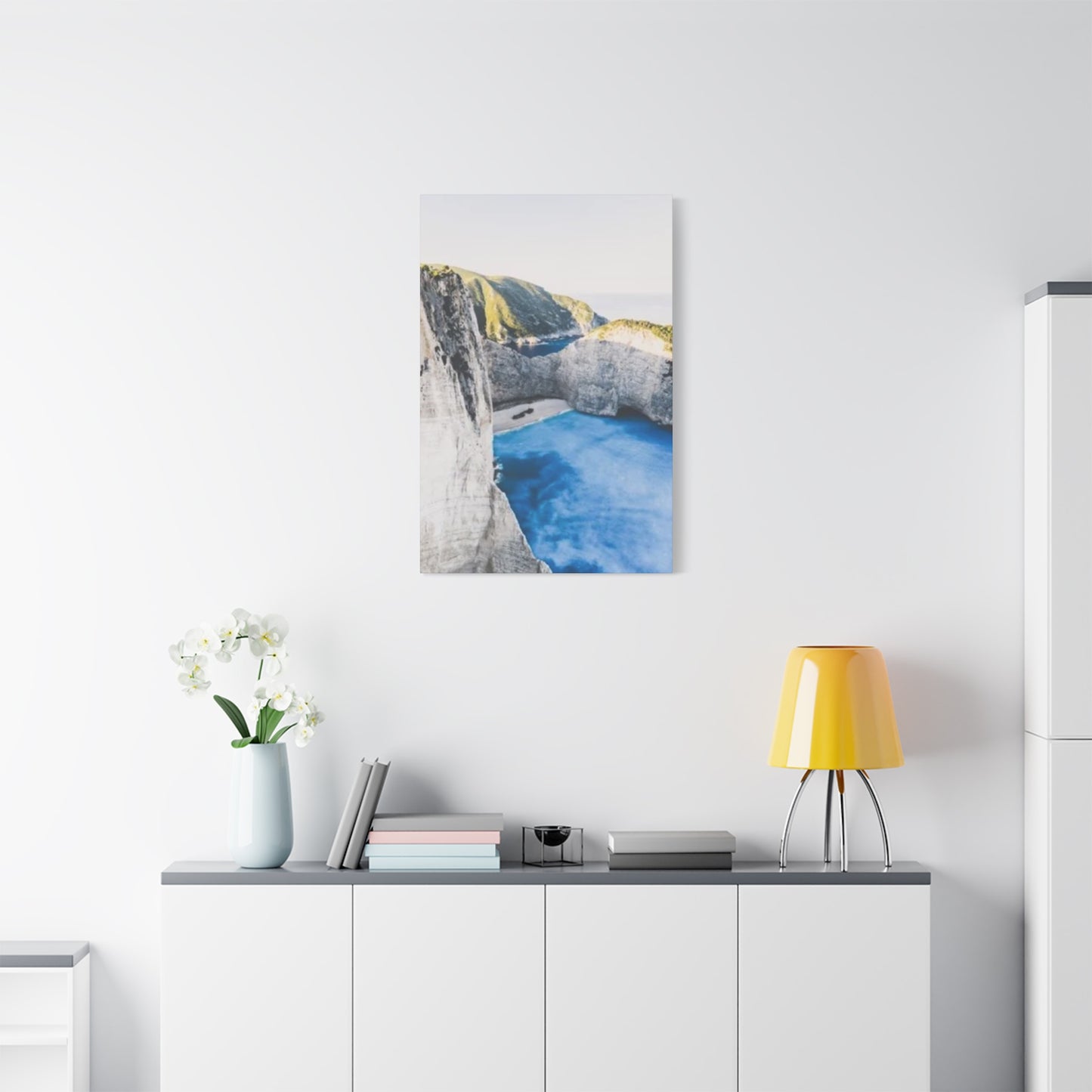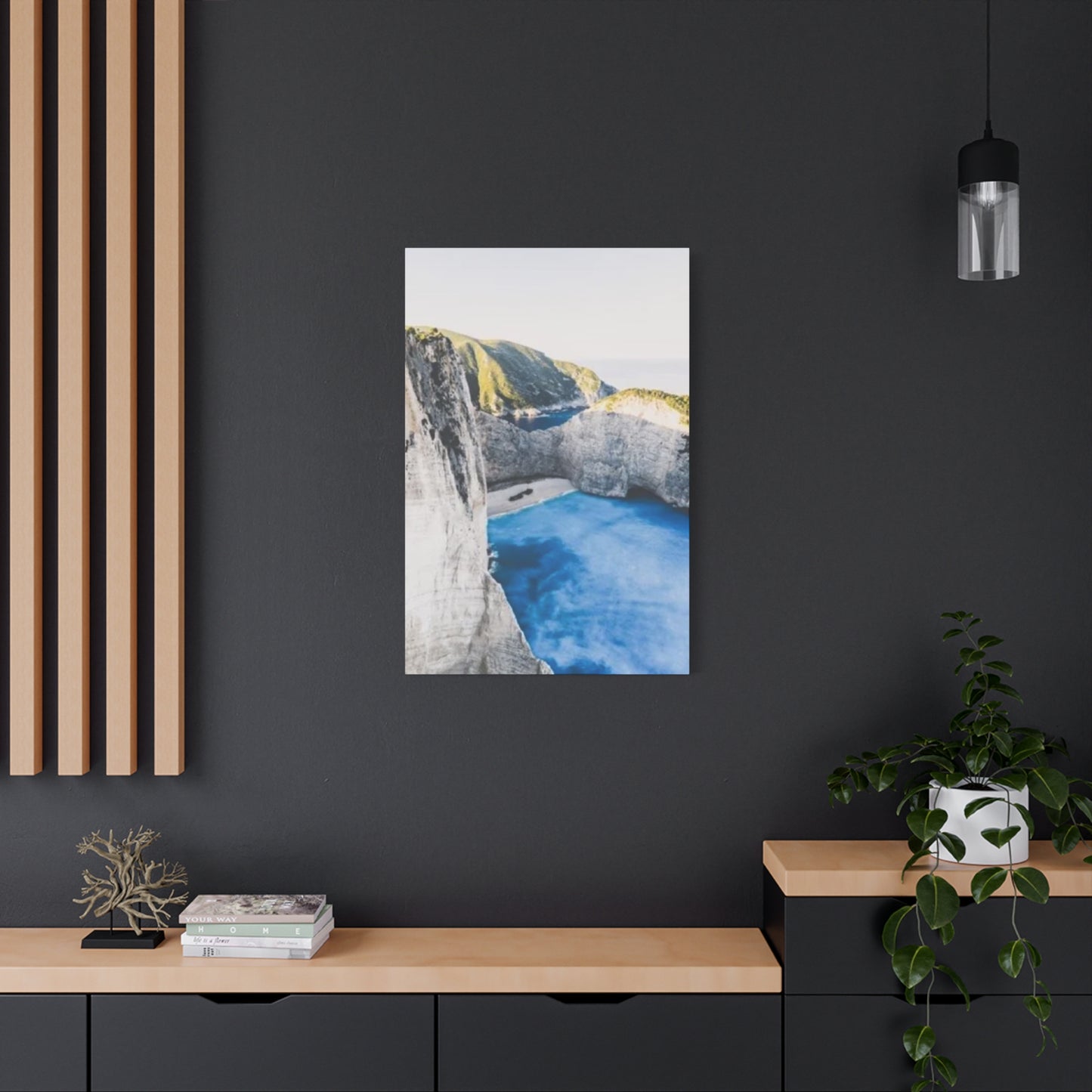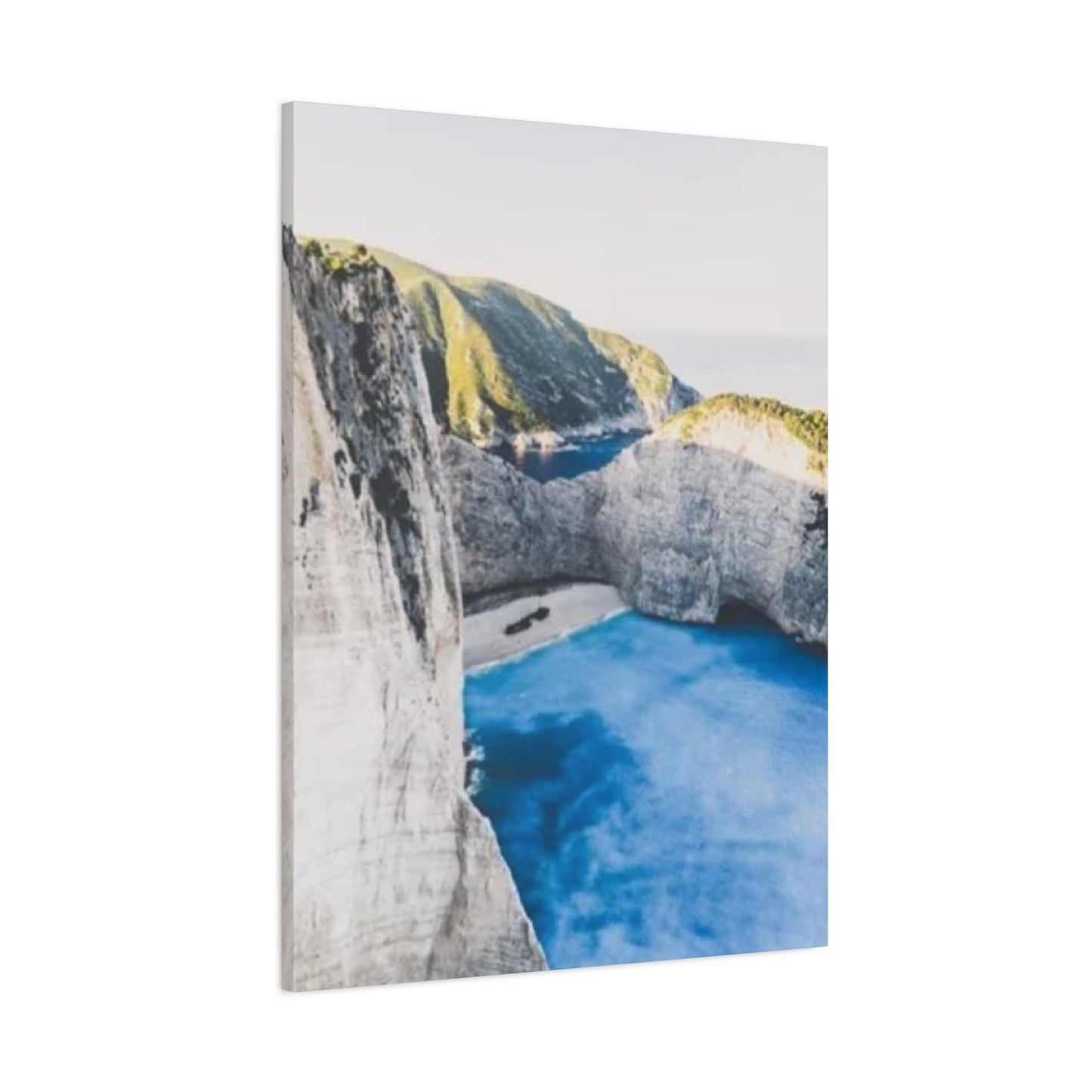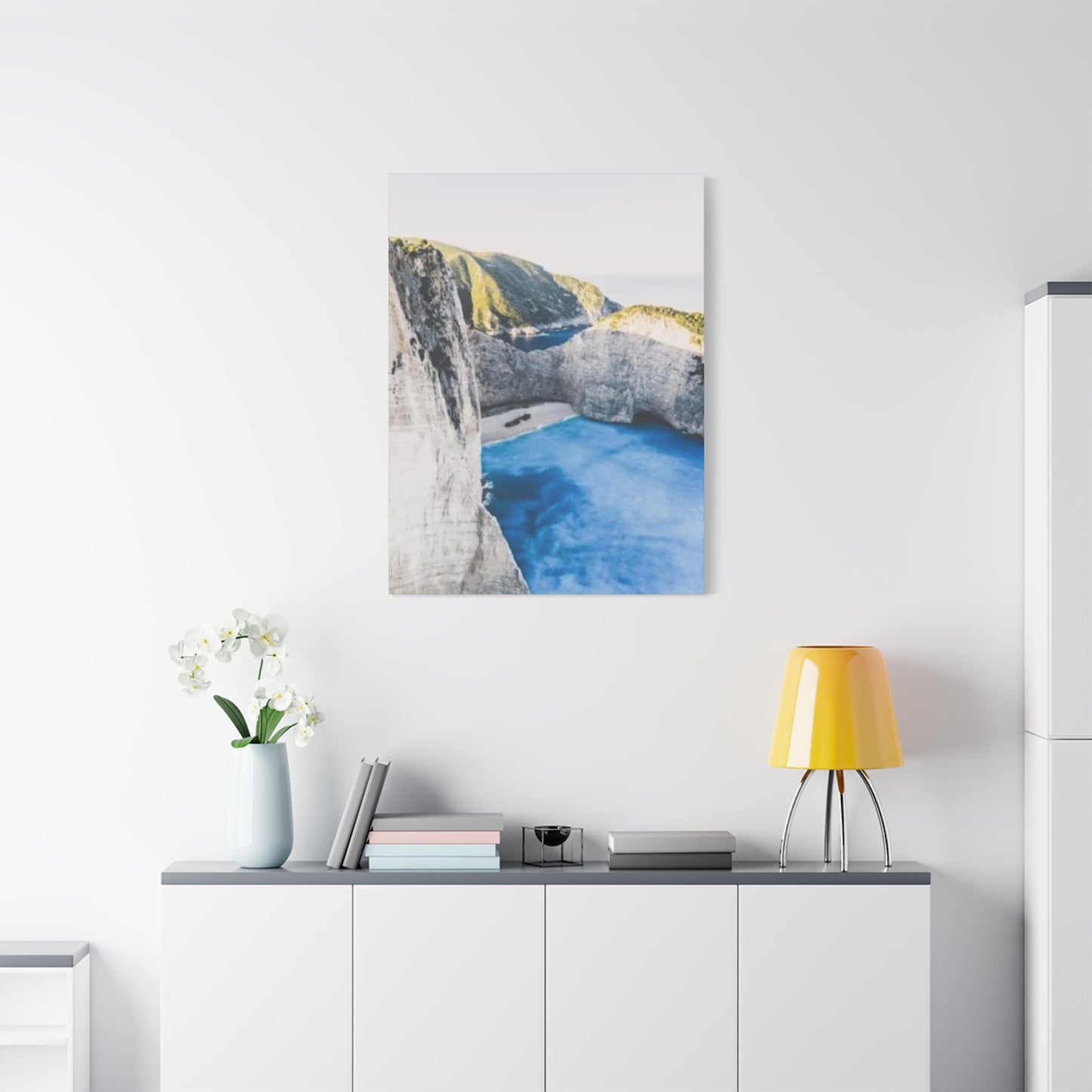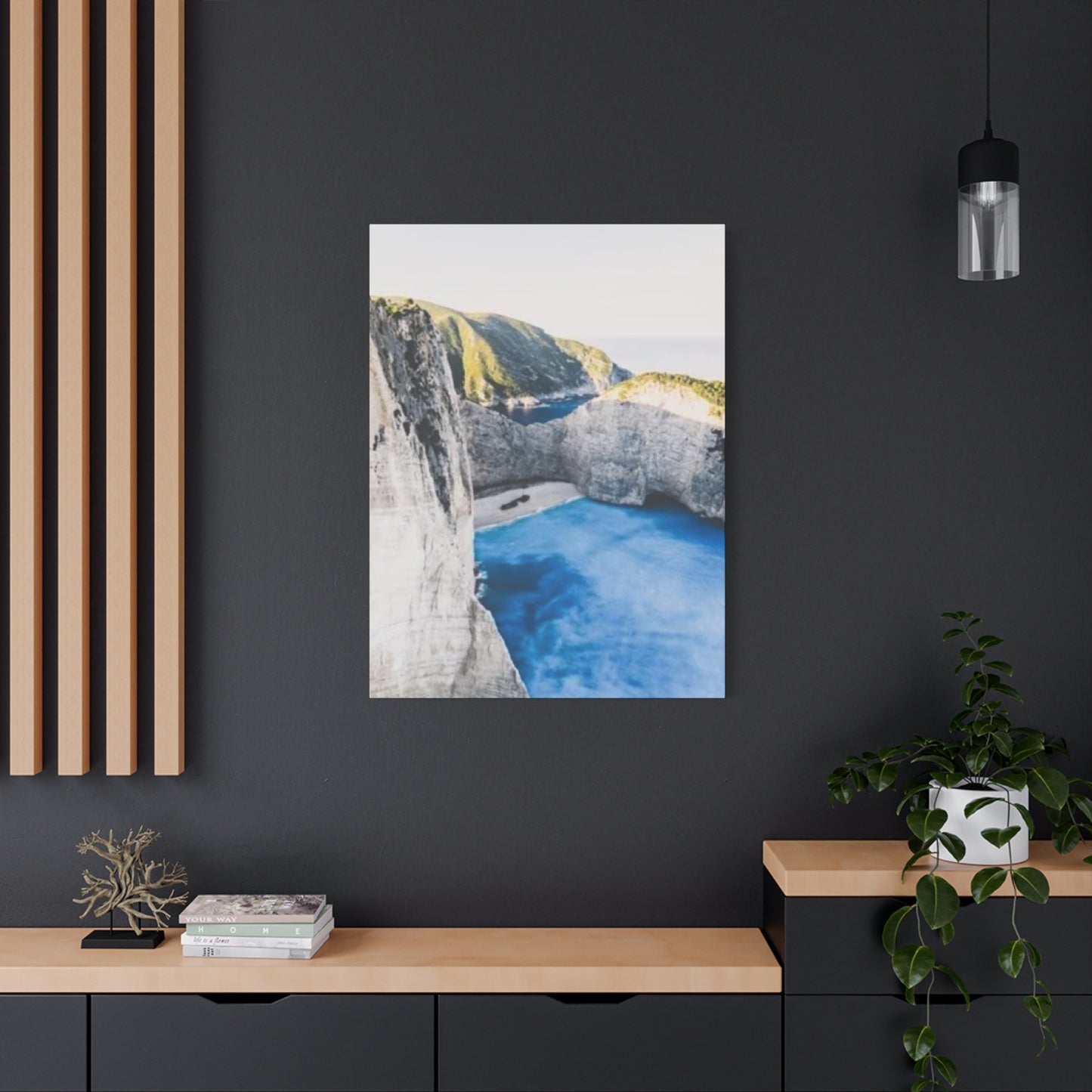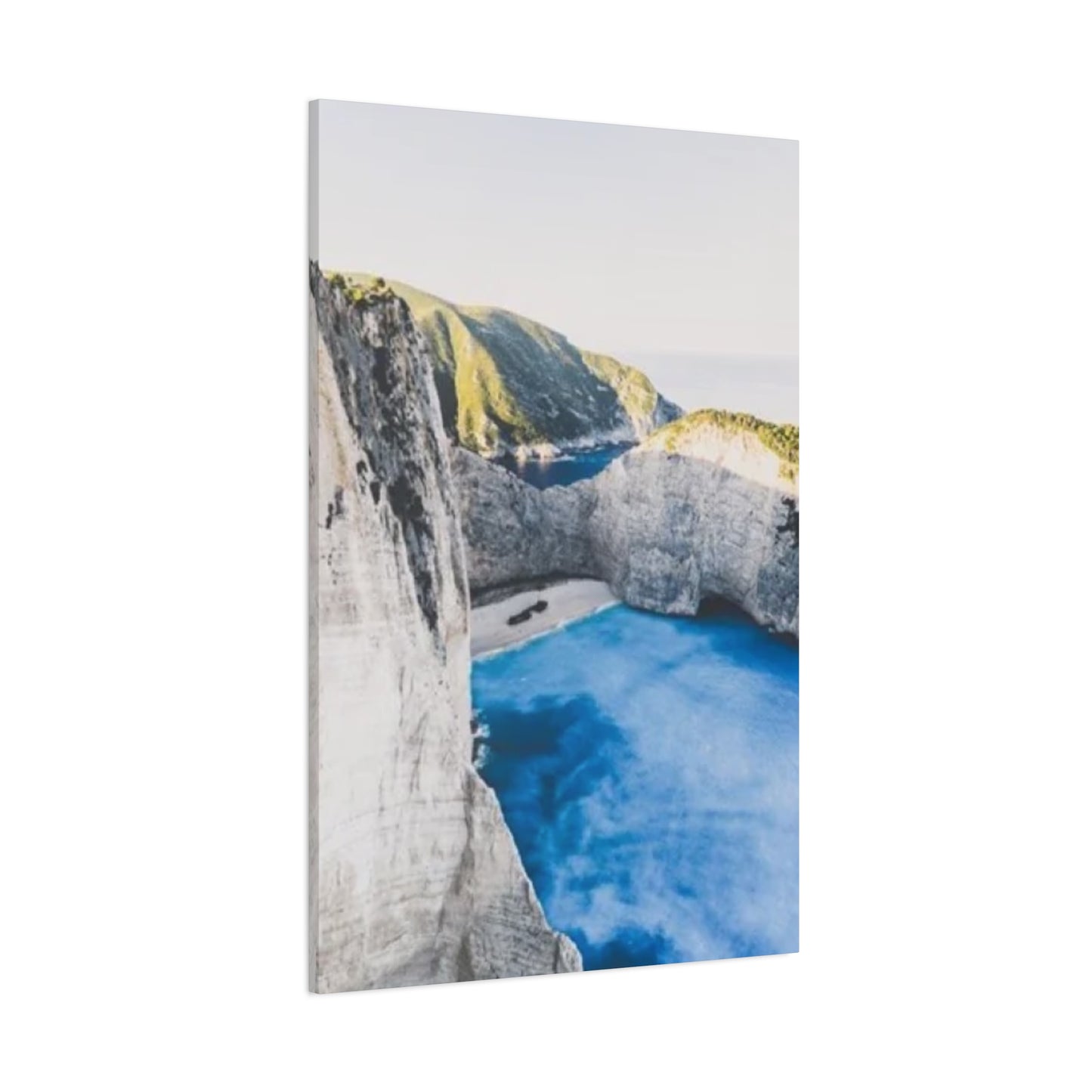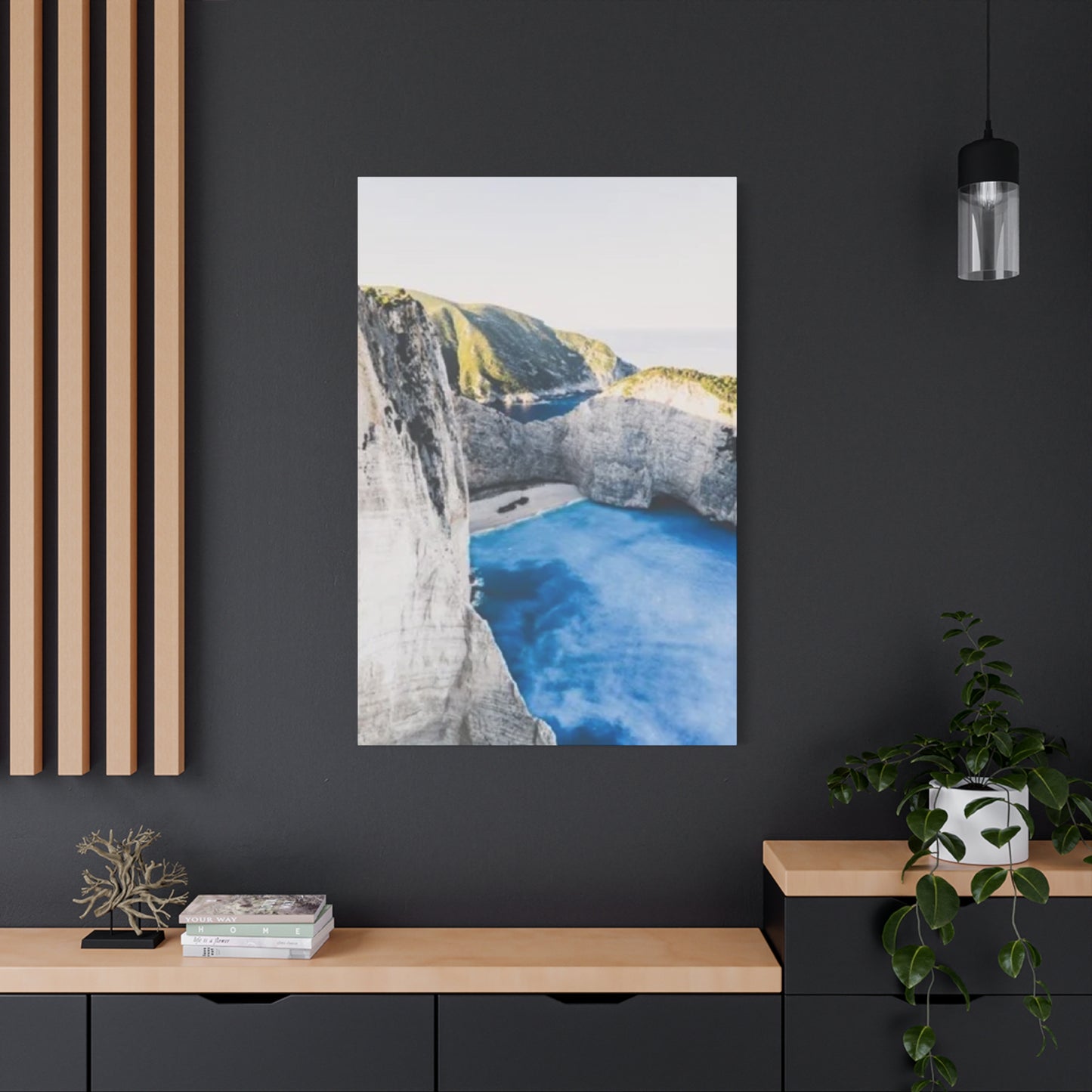Transforming Your Home with Greece Nature Wall Art: Creative Ideas and Expert Tips
Nature has an unparalleled ability to soothe the soul, inspire creativity, and bring tranquility to our daily lives. When we incorporate natural elements into our living environments through carefully selected wall art, we create sanctuaries that connect us to the beauty of the natural world without leaving the comfort of our homes. This comprehensive exploration will guide you through the magnificent world of nature-inspired wall decor, offering insights into how these artistic pieces can transform any room into a peaceful retreat that celebrates the wonder of the outdoors.
The power of nature wall art extends far beyond simple decoration. These pieces serve as windows to other worlds, inviting viewers to experience the majesty of forests, the serenity of ocean waves, the delicate beauty of flowers, and the raw power of mountain landscapes. Whether you prefer realistic photography that captures every detail of a dewdrop on a leaf or abstract interpretations that evoke the feeling of wind through trees, nature wall art offers endless possibilities for personal expression and environmental connection.
In our increasingly digital and urbanized world, the need for natural elements in our living environments has become more crucial than ever. Studies have shown that exposure to nature, even through visual representation, can reduce stress levels, improve focus, and enhance overall well-being. When we carefully select and display nature wall art, we're not just decorating our homes; we're creating therapeutic environments that support our mental and emotional health while reflecting our deep connection to the natural world.
Bringing Natural Elements into Your Living Environment
The concept of incorporating outdoor beauty into indoor environments represents one of the most effective ways to create harmonious living areas that feel both sophisticated and serene. When selecting nature wall art for your home, consider how these pieces can serve as portals to the natural world, bringing the calming influence of outdoor environments into your daily routine. The key lies in understanding how different natural scenes can evoke specific emotions and create desired atmospheres throughout your home.
Forest scenes, with their rich greens and dappled sunlight, naturally create feelings of peace and renewal. These images work particularly well in bedrooms and meditation areas where relaxation is paramount. Mountain landscapes offer a sense of grandeur and permanence that can inspire confidence and determination, making them excellent choices for home offices and study areas. Ocean scenes bring a sense of fluidity and calm that works beautifully in bathrooms and living areas where you want to encourage conversation and relaxation.
The psychological impact of nature imagery cannot be overstated. Research in environmental psychology has consistently shown that exposure to natural scenes, even through artwork, can lower cortisol levels, reduce anxiety, and improve cognitive function. When you carefully select nature wall art that resonates with your personal experiences and preferences, you're creating a environment that supports your well-being while reflecting your individual connection to the natural world.
Consider the scale and placement of your nature wall art carefully. Large pieces can serve as focal points that draw the eye and create dramatic impact, while smaller pieces can be grouped together to create gallery walls that tell stories about different natural environments. The height at which you hang your artwork should allow for comfortable viewing while maintaining proper proportions with your furniture and room dimensions.
The lighting in your room plays a crucial role in how your nature wall art appears throughout the day. Natural light will bring out the true colors and details in your pieces, while artificial lighting can be used to create specific moods and highlight particular aspects of your artwork. Consider installing picture lights or using adjustable track lighting to ensure your nature wall art looks its best at all times.
Exploring Popular Natural Scenes for Your Walls
The world of nature wall art encompasses an incredible diversity of scenes and subjects, each offering unique aesthetic and emotional qualities that can transform your living environment. Understanding the characteristics and appeal of different natural scenes will help you make informed decisions about which pieces will work best in your particular setting and personal style preferences.
Woodland scenes represent one of the most popular categories of nature wall art, and for good reason. These images capture the mysterious beauty of forest environments, with their interplay of light and shadow, rich textures of bark and foliage, and sense of depth that draws viewers into the scene. Whether depicting ancient oak trees with gnarled branches, delicate birch groves with their distinctive white bark, or dense tropical forests with exotic vegetation, woodland art brings a sense of grounding and natural wisdom to any room.
Mountain landscapes offer dramatic beauty and inspiring vistas that can make any room feel more expansive and uplifting. From snow-capped peaks bathed in alpenglow to rolling hills covered in wildflowers, mountain scenes provide a sense of majesty and permanence that can be particularly effective in creating focal points within your decorating scheme. The varied textures and colors found in mountain environments, from rocky cliffs to meadow grasses, offer rich visual interest that works well with both traditional and contemporary decorating styles.
Desert landscapes provide a completely different aesthetic with their warm earth tones, dramatic geological formations, and unique plant life. These scenes can bring warmth and energy to your rooms while celebrating the austere beauty of arid environments. The clean lines and simplified forms often found in desert art work particularly well with modern and minimalist decorating approaches, while the warm color palettes can add comfort and sophistication to cooler rooms.
Garden scenes offer more intimate natural beauty, focusing on the carefully cultivated relationship between humans and nature. Whether depicting formal gardens with structured plantings or wild cottage gardens overflowing with colorful blooms, these images bring a sense of nurturing and growth to your living environment. Garden art works particularly well in dining rooms and kitchens where themes of cultivation and nourishment are especially appropriate.
Prairie and grassland scenes celebrate the subtle beauty of open landscapes where the drama comes from expansive skies, changing weather patterns, and the gentle movement of grasses in the wind. These images can make smaller rooms feel more spacious while bringing a sense of freedom and openness to your decorating scheme. The often simplified color palettes of grassland art can work beautifully with neutral decorating schemes while adding just enough visual interest to prevent rooms from feeling bland.
Creating Tranquil Environments with Forest and Mountain Imagery
Forest and mountain scenes hold a special place in the world of nature wall art due to their powerful ability to create atmospheres of peace, strength, and natural beauty. These landscapes represent some of the most dramatic and emotionally resonant natural environments, offering viewers the opportunity to connect with the primal beauty of wilderness areas from the comfort of their homes.
When selecting forest imagery for your walls, consider the specific type of forest environment that resonates most strongly with your personal experiences and decorating goals. Temperate deciduous forests offer seasonal variety and familiar beauty, with images that might show spring's fresh green leaves, summer's dense canopy, autumn's brilliant colors, or winter's stark branches. These seasonal variations allow you to change your wall art throughout the year or create groupings that celebrate the full cycle of natural change.
Coniferous forests provide a different aesthetic with their evergreen beauty and often more dramatic lighting effects. The tall, straight lines of pine and fir trees can add vertical emphasis to your rooms while the rich greens and blues often found in these scenes create calming, contemplative atmospheres. Mountain forests, where conifers cling to steep slopes and rocky outcroppings, combine the tranquility of forest scenes with the drama of mountain landscapes.
Tropical and subtropical forests offer lush, exotic beauty that can transport viewers to far-away places and create exciting, energizing environments. The dense vegetation, unusual plant forms, and often dramatic lighting of these environments can add excitement and visual richness to your rooms while maintaining the calming influence of natural imagery.
Mountain scenes provide opportunities for creating truly dramatic focal points in your rooms while offering inspiration and a sense of achievement. Whether depicting jagged alpine peaks, gentle rolling mountains, or dramatic volcanic formations, these images can make rooms feel more expansive and inspiring. The play of light and shadow on mountain faces, the changing colors of rock and vegetation at different elevations, and the sense of scale and permanence all contribute to the powerful impact of mountain wall art.
Consider how the specific characteristics of your chosen forest or mountain scenes will work with your existing decorating elements. The colors, textures, and compositional elements in your artwork should complement your furniture, fabrics, and other decorative elements while creating the desired atmosphere for each particular room. The scale of natural features in your chosen images should also work well with the scale of your room and furniture.
Capturing the Power and Serenity of Waterfall Imagery
Waterfall scenes represent one of the most dynamic and emotionally powerful categories of nature wall art, combining the visual drama of moving water with the peaceful associations of natural environments. These images can serve as stunning focal points in your decorating scheme while bringing the refreshing energy of flowing water into your living areas.
The appeal of waterfall art lies in its ability to capture motion within a still medium, creating images that seem to pulse with life and energy even as they hang motionless on your walls. The white foam of cascading water against dark rocks, the mist that rises from pools at the base of falls, and the lush vegetation that often surrounds these natural features all combine to create visually rich and emotionally satisfying artwork.
Different types of waterfalls offer distinct aesthetic qualities that can suit various decorating needs and personal preferences. Tall, narrow waterfalls create vertical emphasis that can make rooms feel taller while drawing the eye upward toward ceiling details or architectural features. These dramatic drops often create stunning contrast between the vertical flow of water and horizontal rock formations or vegetation.
Wide, cascading waterfalls offer a different kind of drama with their broader, more expansive flow patterns. These scenes can create feelings of abundance and power while working well with wider wall areas and horizontal furniture arrangements. The layered effect of water flowing over multiple levels of rock formations adds visual complexity and interest that can hold viewer attention and provide ongoing discovery of new details.
Multi-tiered waterfalls combine the best of both approaches, offering complex compositions that can work well in larger rooms or as centerpieces for gallery wall arrangements. These scenes often include rich environmental details like pools, surrounding vegetation, and varied rock formations that provide additional visual interest and opportunities for color coordination with your existing decorating elements.
The sound associations of waterfall imagery can also contribute to the peaceful atmosphere of your rooms. While the artwork itself is silent, viewers often mentally "hear" the sound of flowing water when looking at these scenes, creating a meditative quality that can help reduce stress and promote relaxation. This psychological effect makes waterfall art particularly appropriate for bedrooms, bathrooms, and other areas where relaxation and stress reduction are important considerations.
Consider the lighting conditions in your chosen location when selecting waterfall art. These images often include dramatic contrasts between bright water and shadowed rocks or vegetation, and proper lighting can enhance these effects while ensuring that all the details in your chosen piece remain visible and impactful.
Abstract Versus Realistic Approaches to Natural Beauty
The choice between abstract and realistic nature wall art represents one of the most important decisions you'll make when selecting pieces for your home, as this choice will significantly impact both the aesthetic effect and emotional resonance of your chosen artwork. Understanding the unique qualities and advantages of each approach will help you make decisions that best serve your decorating goals and personal preferences.
Realistic nature art focuses on accurate representation of natural scenes, often featuring photographic detail and precise color reproduction that allows viewers to clearly recognize and connect with specific natural environments. This approach offers the advantage of immediate recognition and emotional connection, as viewers can relate the artwork to their own experiences in similar natural settings. Realistic forest scenes allow viewers to identify specific tree species and imagine walking through similar environments, while realistic mountain scenes can evoke memories of hiking experiences or inspire dreams of future adventures.
The detailed accuracy of realistic nature art makes it particularly effective for creating immersive environments that truly transport viewers to other places. When well-executed, these pieces can serve as windows to the natural world, offering escape and refreshment from the demands of daily life. The familiar elements in realistic nature art also make these pieces easier to coordinate with existing decorating elements, as the natural colors and forms provide clear guidance for complementary design choices.
Abstract nature art takes a different approach by interpreting natural forms and colors through the artist's personal vision and emotional response to natural environments. Rather than attempting to accurately reproduce specific scenes, abstract nature art captures the essence, mood, and emotional impact of natural experiences. This approach can be particularly powerful because it allows viewers to bring their own interpretations and emotional responses to the artwork, creating more personalized and potentially deeper connections.
The interpretive nature of abstract art also makes these pieces more versatile in terms of decorating applications. Because they don't represent specific, recognizable scenes, abstract nature pieces can work with a wider variety of decorating styles and color schemes while still providing the emotional benefits associated with natural imagery. The simplified forms and emphasized colors often found in abstract nature art can also create stronger visual impact and work more effectively as decorative focal points.
Semi-abstract approaches offer a middle ground between these two extremes, maintaining recognizable natural elements while allowing for artistic interpretation and emphasis. These pieces might feature clearly identifiable trees or mountains rendered in non-naturalistic colors, or natural forms simplified and stylized to emphasize particular aesthetic qualities. This approach can provide the emotional connection of realistic art while offering the design flexibility of abstract interpretation.
Consider your personal response to different levels of abstraction when making your selections. Some people find realistic art more emotionally satisfying because of its clear connection to actual experiences, while others prefer the interpretive possibilities and design versatility of abstract approaches. Your choice should reflect both your personal aesthetic preferences and the specific decorating requirements of your particular rooms and overall home style.
Celebrating Floral and Botanical Beauty in Wall Art
Floral and botanical wall art represents one of the most beloved and versatile categories of nature-inspired decoration, offering opportunities to bring the delicate beauty of plants and flowers into your living environment while creating sophisticated and elegant decorative statements. The rich tradition of botanical illustration and floral painting provides a wealth of artistic styles and approaches that can complement virtually any decorating scheme.
The appeal of floral art lies in its ability to combine natural beauty with cultural symbolism and personal meaning. Different flowers carry various associations and meanings that can add layers of significance to your decorating choices. Roses suggest romance and classic beauty, making them appropriate for bedrooms and formal dining areas. Sunflowers evoke feelings of warmth and happiness that work well in kitchens and breakfast areas. Orchids suggest exotic elegance and sophisticated taste, making them excellent choices for formal living areas and entryways.
Botanical illustration represents a more scientific approach to plant imagery, focusing on accurate representation and detailed study of plant structures. These pieces often feature clean, precise lines and careful attention to botanical accuracy that can create sophisticated and educational decorative statements. The often neutral backgrounds and careful compositions of botanical illustrations make them particularly versatile for coordinating with existing decorating elements.
Garden scenes offer a broader approach to floral art by depicting flowers within their natural growing environments. These images can range from formal garden settings with carefully planned plant combinations to wild meadow scenes where flowers grow in natural profusion. Garden art brings not only the beauty of individual flowers but also the sense of place and environmental context that can make rooms feel more connected to outdoor environments.
Seasonal floral themes allow you to change your wall art throughout the year, celebrating the natural cycle of plant growth and bloom. Spring cherry blossoms, summer roses, autumn chrysanthemums, and winter evergreens can help your rooms reflect the changing seasons while maintaining consistent decorative themes. This approach can be particularly effective in creating gallery walls or groupings that tell the story of the natural year.
The scale of floral art can vary dramatically from intimate close-up studies of individual blooms to expansive garden vistas that can serve as major focal points in your decorating scheme. Large-scale floral pieces can create dramatic impact and serve as centerpieces for room design, while smaller pieces can be grouped together to create more complex and detailed decorative statements.
Consider the color relationships between your chosen floral art and your existing decorating elements. The natural colors found in flowers and plants can provide excellent coordination opportunities with fabrics, furniture, and other decorative elements while ensuring that your rooms maintain harmonious and sophisticated color schemes.
Creating Impact with Large-Scale Natural Canvas Prints
Large-scale nature canvas prints offer unique opportunities to create dramatic focal points and immersive environments within your living areas. These substantial pieces can transform entire rooms while providing powerful connections to the natural world that smaller artworks simply cannot achieve. Understanding how to effectively select, place, and coordinate large-scale natural art will help you harness their transformative potential while avoiding common decorating mistakes.
The impact of large-scale nature art comes from its ability to create immediate visual dominance and emotional presence within a room. When you enter a room featuring a substantial nature canvas, that piece immediately commands attention and sets the emotional tone for the entire environment. This commanding presence makes large-scale pieces particularly effective for creating themed rooms or establishing strong decorative statements that reflect your personal connection to natural environments.
Size considerations for large nature prints must take into account both the physical dimensions of your room and the scale of your furniture and other decorative elements. A piece that seems dramatically large in a gallery or store might appear underwhelming when placed on a large wall in a spacious room, while a piece that seems reasonably sized in a large showroom might overwhelm a smaller domestic setting. As a general guideline, large wall art should occupy roughly two-thirds to three-quarters of the available wall area to create proper visual balance.
The subject matter of large-scale nature prints becomes particularly important because of the increased visual impact these pieces provide. Detailed forest scenes can create immersive environments that make viewers feel surrounded by natural beauty, while expansive mountain vistas can make rooms feel larger and more open. Ocean scenes with their sense of movement and depth can create feelings of peace and infinity that work particularly well in meditation areas and bedrooms.
Placement considerations for large nature canvases extend beyond simply finding wall area of appropriate size. These pieces work most effectively when positioned at appropriate viewing distances that allow viewers to appreciate both the overall composition and the detailed elements within the artwork. The center of large pieces should generally be positioned at eye level for comfortable viewing, though this may need to be adjusted based on seating arrangements and traffic patterns within the room.
The framing and mounting of large nature prints requires special attention to ensure both visual appeal and structural security. The weight of large canvases necessitates proper wall anchoring and appropriate hanging hardware to ensure safety and prevent damage to your walls. Consider whether your chosen piece will work better with or without traditional framing, as large canvases often work well with gallery-wrapped edges that eliminate the need for separate frames.
Integration with existing decorating elements becomes particularly important with large-scale nature art because of the dominant visual presence these pieces create. Your furniture arrangement, color scheme, and other decorative elements should work harmoniously with your large nature print rather than competing for attention. This might require repositioning furniture, adjusting lighting, or modifying other decorative elements to create a cohesive and balanced overall effect.
Inspiring Productivity with Office-Appropriate Natural Imagery
The incorporation of nature wall art into office environments represents one of the most effective ways to create inspiring and productive work areas while counteracting the potentially sterile or stressful qualities of traditional office settings. Research has consistently shown that exposure to natural imagery can improve concentration, reduce stress, and enhance creative thinking, making nature art not just decorative but functionally beneficial for work environments.
The selection of appropriate nature imagery for office settings requires balancing personal preferences with professional requirements and the specific demands of different types of work. Images that are too busy or emotionally distracting might interfere with concentration and focus, while pieces that are too bland or generic might fail to provide the intended benefits. The key lies in choosing nature art that provides inspiration and stress relief without becoming visually overwhelming or inappropriate for professional settings.
Mountain landscapes work particularly well in office environments because they suggest achievement, stability, and long-term perspective while providing inspiring vistas that can help workers maintain motivation during challenging projects. The clean lines and dramatic forms often found in mountain imagery also complement modern office furniture and architectural elements while providing visual relief from the geometric forms that dominate most work environments.
Forest scenes can create feelings of calm and renewal that help counteract work-related stress while providing the visual complexity that can stimulate creative thinking. The natural patterns and organic forms found in forest imagery offer excellent contrast to the man-made regularity of office environments while maintaining the sophistication appropriate for professional settings. Choose forest scenes with sufficient visual depth and interest to provide ongoing discovery while avoiding images that are so complex they become distracting.
Abstract nature art can work particularly well in office settings because it provides the psychological benefits of nature imagery while maintaining the sophistication and contemporary appeal appropriate for professional environments. Abstract interpretations of natural forms and colors can create inspiring focal points while working harmoniously with modern office furniture and architectural elements.
The scale of office nature art should be appropriate for typical viewing distances and the specific requirements of your work environment. Pieces that are too large might overwhelm smaller office areas or interfere with necessary wall-mounted equipment, while pieces that are too small might fail to provide adequate visual impact or stress-relief benefits. Consider how your chosen art will work with computer monitors, bookshelves, and other office equipment while maintaining its intended decorative and psychological effects.
Lighting considerations become particularly important in office settings where artificial lighting predominates and natural light may be limited or variable. Choose nature art that works well under fluorescent or LED lighting conditions, and consider whether additional picture lighting might be necessary to ensure your chosen pieces maintain their intended visual impact throughout the working day.
The positioning of office nature art should take into account workflow patterns, client visibility, and the specific requirements of your work activities. Pieces positioned where they can be easily viewed during brief mental breaks can provide maximum stress-relief benefits, while art positioned for client viewing should reflect professional competence while showcasing your appreciation for natural beauty.
Embracing Seasonal Natural Themes in Your Decor
Seasonal nature themes in wall art provide opportunities to create dynamic decorating schemes that change throughout the year, reflecting the natural cycle of seasons while keeping your living environment fresh and engaging. This approach celebrates the natural rhythm of environmental change while allowing you to express different aspects of your personality and decorating preferences as the year progresses.
Spring-themed nature art captures the renewal and fresh energy of the growing season with images of budding trees, blooming flowers, and fresh green landscapes. These pieces can help counteract the effects of long winters while celebrating the return of natural color and activity. Spring imagery often features bright, fresh colors and delicate forms that can make rooms feel more energetic and optimistic. Consider art depicting cherry blossoms, spring meadows filled with wildflowers, or forest scenes showing the first leaves of the season.
Summer nature art celebrates the peak of natural abundance and activity with lush landscapes, full-bloom gardens, and vibrant outdoor scenes. These images often feature rich, saturated colors and complex compositions that reflect the visual richness of summer environments. Beach scenes, mountain meadows, and dense forest canopies all provide summer themes that can make your rooms feel warm and inviting while celebrating the joy of the outdoor season.
Autumn-themed art captures the dramatic beauty of seasonal change with brilliant foliage colors, harvest scenes, and landscapes preparing for winter dormancy. The warm oranges, reds, and yellows traditionally associated with autumn can create cozy, welcoming atmospheres that work particularly well during the cooler months. Consider forest scenes showcasing fall foliage, pumpkin patches, or mountain landscapes with autumn colors.
Winter nature art focuses on the stark beauty and peaceful qualities of dormant landscapes, often featuring snow-covered scenes, bare tree branches, and the subtle colors of winter environments. These pieces can create sophisticated, contemplative atmospheres that reflect the introspective qualities often associated with winter months. Winter art might include snow-covered forests, icy mountain peaks, or the delicate patterns of frost and ice formations.
Implementing seasonal rotation of your nature wall art requires planning and storage considerations to ensure your pieces remain in good condition when not displayed. Consider creating designated storage areas that protect your artwork from damage while keeping pieces easily accessible for seasonal changes. Proper storage includes protecting pieces from moisture, temperature fluctuations, and physical damage while maintaining organization that makes seasonal switches convenient and enjoyable.
The frequency of seasonal changes can be adjusted to match your personal preferences and practical considerations. Some people prefer to change their art with each season, while others might prefer twice-yearly changes that mark major seasonal transitions. Consider your available time, storage facilities, and the number of pieces in your seasonal collection when planning your rotation schedule.
Transitional pieces that work across multiple seasons can help bridge the gaps between major seasonal changes while reducing the number of pieces you need to store and rotate. Evergreen forest scenes, mountain landscapes, and certain abstract nature pieces can work well throughout the year while allowing you to make smaller adjustments with accessories and complementary artwork.
Showcasing Wildlife Through Photography in Your Home
Wildlife photography represents one of the most exciting and emotionally engaging categories of nature wall art, offering opportunities to bring the beauty and drama of animal life into your living environment while celebrating the diversity and wonder of the natural world. These images can serve as conversation starters, educational tools, and sources of daily inspiration while adding unique personality to your decorating scheme.
The appeal of wildlife photography lies in its ability to capture fleeting moments and rare encounters that most viewers would never experience firsthand. Whether depicting the power of large predators, the grace of birds in flight, or the intimate details of smaller creatures, wildlife art can transport viewers into the hidden world of animal behavior while creating emotional connections that purely landscape-based nature art cannot provide.
Different categories of wildlife subjects offer distinct aesthetic and emotional qualities that can serve various decorating purposes. Large mammal photography, featuring subjects like elk, bears, or big cats, creates dramatic focal points that suggest power and wildness while working particularly well in rooms where you want to create strong visual impact. The natural earth tones often found in mammal photography coordinate well with traditional decorating schemes while adding excitement and energy to living areas.
Bird photography offers opportunities to celebrate grace, freedom, and natural beauty through images of creatures in flight or displaying their most spectacular plumage. The often brilliant colors found in bird photography can provide excellent coordination opportunities with colorful decorating schemes while the sense of movement and flight can make rooms feel more dynamic and energetic. Consider how different bird subjects might work with your decorating goals, from the dramatic impact of raptors to the delicate beauty of songbirds.
Marine wildlife photography brings the mystery and beauty of underwater environments into your home while showcasing creatures that most people rarely encounter. The unique lighting conditions and color palettes found in underwater photography can create sophisticated and unusual decorative statements that work particularly well in bathrooms and areas where you want to create calm, flowing atmospheres.
Macro wildlife photography focuses on the intricate details of smaller creatures, revealing patterns, textures, and colors that are invisible to casual observation. These detailed studies can work well in smaller rooms or as part of gallery wall arrangements while providing ongoing opportunities for discovery and contemplation. The often abstract qualities of extreme close-up wildlife photography can bridge the gap between realistic and abstract art approaches.
The ethical considerations surrounding wildlife photography become important when selecting pieces for your home. Choose artwork from photographers who practice ethical wildlife photography, maintaining appropriate distances from subjects and avoiding practices that stress or endanger animals. Supporting ethical wildlife photographers helps ensure the continued protection of natural habitats and wildlife populations while providing you with artwork that reflects your values regarding environmental stewardship.
Technical considerations for displaying wildlife photography include proper lighting to showcase the often complex details and subtle color variations found in these images. The dramatic contrast ranges often present in wildlife photography may require careful attention to room lighting to ensure that both shadow and highlight details remain visible and impactful.
Integrating Natural Art with Contemporary Living Areas
The successful integration of nature wall art with modern architectural elements and contemporary furnishing requires careful attention to scale, color, and stylistic compatibility while maintaining the emotional impact and natural beauty that makes these pieces appealing. Understanding how to balance the organic qualities of nature art with the clean lines and geometric forms of contemporary design will help you create sophisticated living environments that celebrate both natural beauty and modern aesthetics.
Contemporary decorating styles often emphasize clean lines, simplified forms, and neutral color palettes that can provide excellent backdrops for nature wall art while allowing these pieces to serve as focal points and sources of color and texture. The key lies in selecting nature art that complements rather than competes with your contemporary furnishing while maintaining its essential connection to natural environments.
Abstract and semi-abstract nature art often works particularly well with contemporary decorating because these pieces can provide the emotional benefits of nature imagery while maintaining the sophisticated, interpretive qualities that complement modern design sensibilities. Abstract forest scenes might capture the essence of woodland environments through simplified forms and emphasized colors that work harmoniously with contemporary furniture and architectural elements.
The scale relationships between nature art and contemporary furniture become particularly important because modern furnishing often features bold, geometric forms that can compete with artwork for visual attention. Large-scale nature pieces can hold their own against substantial contemporary furniture while creating the dramatic impact that modern rooms often require. Conversely, smaller nature pieces might need to be grouped or strategically positioned to maintain adequate visual presence in rooms dominated by large contemporary elements.
Color coordination between nature art and contemporary decorating schemes requires understanding how natural colors can work with the often neutral palettes favored in modern design. The earth tones found in many nature pieces can warm up cool contemporary color schemes while the greens and blues common in landscape and ocean art can add refreshing contrast to neutral environments. Consider how the colors in your chosen nature art can serve as accent colors that tie together various elements in your contemporary decorating scheme.
Framing and mounting considerations become particularly important when integrating nature art with contemporary design because the presentation style can significantly impact how well pieces work with modern architectural elements. Sleek, minimal framing often works better than ornate traditional frames, while gallery-wrapped canvases can provide clean, contemporary presentation that allows the natural subject matter to take precedence.
The placement of nature art within contemporary rooms should take advantage of the often dramatic architectural features found in modern homes while ensuring that pieces receive appropriate lighting and viewing conditions. Large windows, high ceilings, and open floor plans characteristic of contemporary design can provide excellent opportunities for displaying nature art while the clean backgrounds typical of modern decorating can help nature pieces achieve maximum visual impact.
Lighting design in contemporary homes often includes sophisticated systems that can be adjusted to highlight artwork while providing general illumination. Take advantage of these systems to ensure your nature art receives proper lighting while integrating smoothly with your overall lighting scheme.
Creating Your Own Nature-Inspired Artistic Projects
Developing your own nature wall art projects provides opportunities to create unique, personalized pieces that reflect your individual connection to natural environments while developing creative skills and enjoying hands-on artistic expression. Whether you're working with photography, painting, collage, or other artistic mediums, creating your own nature art ensures that your pieces perfectly match your decorating needs and personal aesthetic preferences.
Nature photography represents one of the most accessible approaches to creating your own nature wall art, requiring relatively minimal initial investment while offering unlimited creative possibilities. Modern digital cameras and smartphones make it easier than ever to capture high-quality images of natural subjects, while photo editing software provides tools for enhancing and personalizing your captured images to create unique artistic statements.
When developing your nature photography skills, focus on learning to see and capture the elements that make natural scenes emotionally engaging and visually compelling. This might include understanding how different lighting conditions affect the mood and appearance of natural subjects, learning to compose images that draw viewers into the scene, or developing techniques for capturing the motion and energy found in natural environments.
Local natural environments provide excellent subjects for photography projects while allowing you to develop familiarity with particular locations through repeated visits and changing conditions. A single tree, garden, or natural area can provide numerous artistic opportunities as you learn to see it under different lighting conditions, seasonal changes, and weather patterns. This approach also reduces travel requirements while helping you develop deeper appreciation for natural beauty in your immediate environment.
Painting and drawing offer different creative possibilities for interpreting natural subjects while allowing for more personal expression and stylistic interpretation than photography typically provides. Whether working with watercolors, acrylics, oils, or drawing materials, traditional art mediums allow you to emphasize particular aspects of natural scenes while developing your own artistic voice and style.
Beginning painters might start with simple natural subjects like individual flowers or basic landscape compositions before progressing to more complex scenes and techniques. The forgiving nature of many natural subjects makes them excellent choices for developing artistic skills, as small imperfections or stylistic variations can add character and personal expression rather than detracting from the finished piece.
Collage techniques offer opportunities to combine different materials and approaches while creating unique interpretations of natural themes. You might combine photographic elements with painted or drawn components, incorporate actual natural materials like leaves or flowers, or use magazine and printed materials to create abstract interpretations of natural subjects.
Mixed media approaches allow for even greater creative freedom by combining multiple artistic techniques and materials within single pieces. These projects might include combinations of painting and photography, collage elements with traditional drawing, or incorporation of three-dimensional elements that add texture and physical interest to your nature art.
The technical aspects of creating wall-ready art include understanding proper sizing, mounting, and finishing techniques that will ensure your handmade pieces look professional and integrate well with your decorating scheme. This might involve learning about proper paper or canvas preparation, understanding color permanence and stability, or developing skills in matting and framing that will protect and present your work effectively.
Documentation and development of your artistic projects through sketching, note-taking, and process photography can help you learn from your experiences while building a body of work that reflects your growing skills and developing artistic vision. Consider keeping an artist's journal that includes both successful pieces and experiments that didn't work as planned, as both can provide valuable learning opportunities.
Understanding the Psychological Benefits of Natural Imagery
The psychological and emotional benefits of incorporating nature wall art into your living environment extend far beyond simple aesthetic appeal, encompassing well-documented effects on mental health, stress reduction, and overall well-being that make these pieces valuable investments in your quality of life. Understanding these benefits can help you make more informed decisions about selecting and positioning nature art while maximizing its positive impact on your daily experience.
Scientific research in environmental psychology has consistently demonstrated that exposure to natural imagery can produce measurable physiological and psychological responses that promote relaxation and stress reduction. Studies have shown that viewing nature scenes can lower blood pressure, reduce cortisol levels, and decrease heart rate while promoting feelings of calm and well-being. These effects occur even when the natural imagery is presented through artwork rather than direct experience, making nature wall art a practical way to access these benefits within your home environment.
The concept of biophilia, which describes humans' innate affinity for natural environments and living systems, helps explain why nature imagery has such powerful psychological effects. Our evolutionary history as creatures who lived in close connection with natural environments has created deep-seated responses to natural stimuli that continue to influence our well-being even in modern, urban settings. Nature wall art helps satisfy these biophilic needs while providing psychological restoration that can counteract the stresses of contemporary life.
Attention restoration theory suggests that natural environments provide opportunities for mental recovery from the directed attention fatigue that results from focusing on demanding tasks and urban stimuli. Natural imagery can provide similar restorative benefits by offering visual complexity that is engaging without being demanding, allowing mental restoration while viewing the artwork. This makes nature wall art particularly valuable in work environments and other settings where mental fatigue might accumulate.
The specific psychological effects of different types of nature imagery can vary based on individual associations and the particular characteristics of the scenes depicted. Water scenes often promote feelings of calm and tranquility due to associations with flowing movement and refreshing qualities. Forest scenes typically create feelings of peace and renewal while suggesting shelter and protection. Mountain imagery often inspires feelings of achievement and perspective while providing sense of permanence and stability.
Color psychology plays an important role in the psychological effects of nature wall art, as different colors evoke distinct emotional responses that can be harnessed to create desired atmospheres within your rooms. The greens commonly found in forest and garden imagery promote feelings of balance and renewal while reducing anxiety. Blues associated with sky and water create calming effects while promoting clear thinking. Earth tones found in many landscape scenes provide grounding and comfort while creating warm, welcoming atmospheres.
Conclusion
Transforming your home with Greece nature wall art is an inspiring way to infuse your living space with the breathtaking beauty and timeless charm of the Mediterranean. From serene seascapes and rugged mountain vistas to vibrant olive groves and iconic whitewashed villages, Greece’s natural landscapes offer endless creative inspiration for wall art that can elevate any room. By thoughtfully selecting pieces that reflect your personal style and the rich diversity of Greece’s environment, you create a space that is both visually captivating and emotionally uplifting.
Incorporating Greece nature wall art allows you to bring a piece of the Mediterranean’s tranquility and vitality into your home. The vivid blues of the Aegean Sea, the earthy greens of olive trees, and the warm hues of sunlit cliffs and blossoms all contribute to a calming yet invigorating atmosphere. This art not only beautifies your space but also serves as a daily reminder of nature’s restorative power, helping to create an environment conducive to relaxation and inspiration.
Expert tips for integrating Greece nature art include considering the scale and placement of your pieces to create focal points that draw the eye and balance the room. Mixing different styles—such as photography, watercolor, and abstract art—can add depth and texture to your decor, while complementing the existing color palette ensures harmony throughout your space. Don’t be afraid to experiment with grouping smaller pieces into a gallery wall or pairing large statement works with subtle accents to create visual interest.
Moreover, choosing Greece nature wall art supports artists who capture the unique landscapes and spirit of this remarkable country. These pieces often carry stories of culture, history, and environmental beauty, making them more than just decoration—they become meaningful connections to a place cherished by millions.
In conclusion, Greece nature wall art offers a powerful way to transform your home by celebrating the Mediterranean’s extraordinary landscapes and natural wonders. With creative ideas and expert tips, you can curate a collection that not only enhances your decor but also inspires a deeper appreciation for Greece’s vibrant environment. Whether you prefer bold, dramatic scenes or soft, delicate impressions, this art style invites you to bring the essence of Greece into your everyday life, turning your home into a sanctuary of beauty and inspiration.

















